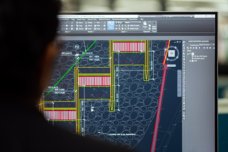Agent-based modeling is a powerful simulation approach. It is a bottom-up approach to understanding complex systems. Particularly when coupled with geospatial and agricultural management data, it has been widely used by scientists, stakeholders, and policy makers.
Do you want to be able to design and build an ABM for your project, execute it, and communicate your model to others? Then you are in the right place!
In this open-access course you will gain practical experience with multiple ABMs, as well as getting an overview of the theoretical and practical knowledge necessary to get the most out of spatial agent-based models.
At Geoversity, we think active learning is very important, so we have prepared a variety of teaching and learning activities, including hands-on coding exercises, model answers, mini-lectures, quizzes, and personalisable individual assignments. This way, you can practice each technique as soon as you learn about it.
Learning outcomes
After this course, you will be able to:
- Document an existing ABM with a standard protocol, including formulating the purpose of the model
- Read, run, and modify Netlogo models, including automatizing simulation runs in NetLogo
- Identify a CAS system, describe its relevant complex properties (such as emergence and scales), describe how to incorporate spatial data, and link the complex properties with model components and dynamics
- List and define steps in the modeling cycle for using ABM to simulate complex systems
- Identify and give examples of agent-agent interactions and agents-environment interactions
- Summarize options of simulating agents’ characteristics and decision-making
Course content
The course is divided into 5 Units:






